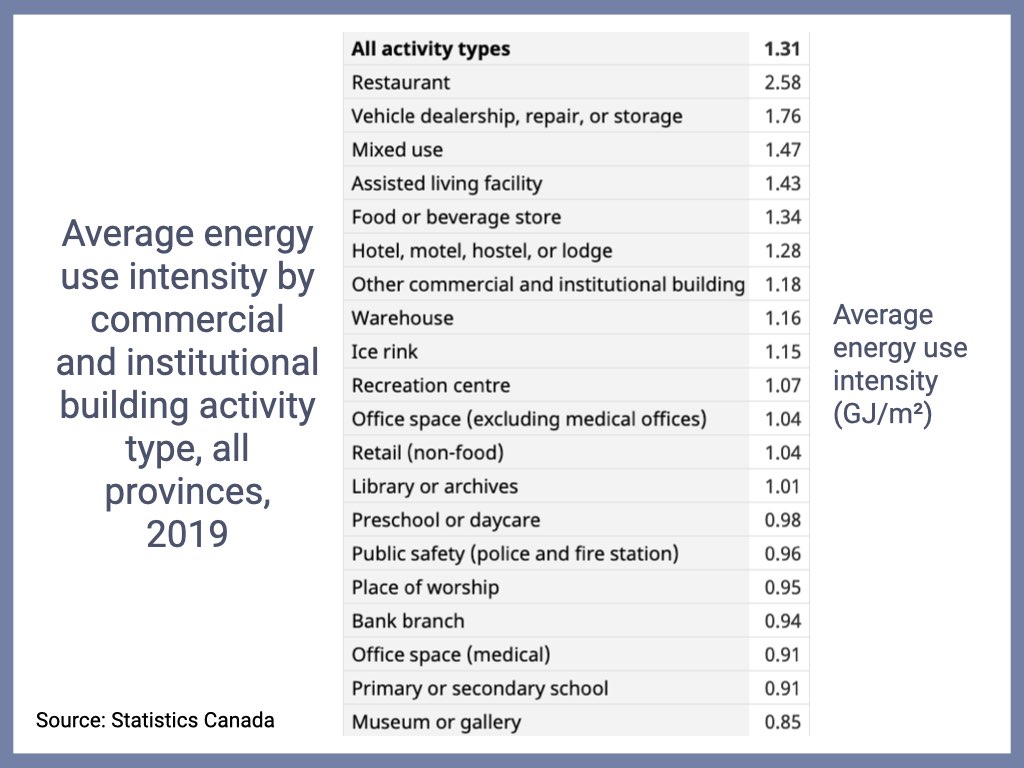
Features
News
Restaurants top energy hogs among commercial and institutional buildings – 2019
October 3, 2022 By Anthony Capkun

October 3, 2022 – Recently published by Statistics Canada, the Survey of Commercial and Institutional Energy Use provides data on energy demand and consumption in commercial and institutional buildings across the provinces (hospitals and post-secondary institutions are excluded).
In 2019, there were over half-a-million commercial and institutional buildings (555,951) in Canadian provinces, occupying a total floor area of 709.0 million square metres (m²).
The total energy consumed by these buildings in 2019 was 948.2 million gigajoules (GJ), while the average energy use intensity (EUI) in Canadian provinces was 1.31 gigajoules per square metre (GJ/m²).
The average household in Canada consumes 88.4 GJ per year, meaning the total energy used by commercial and institutional buildings is equivalent to the annual energy use of over 10.7 million households.
Of the buildings surveyed, restaurants account for the highest average energy use intensity.

Open image in new tab/window to see full size.
Across all provinces, buildings where “restaurant” was the main activity represented the highest average EUI at 2.58 GJ/m². Buildings where the main activity was “vehicle dealership”, repair, or storage” had the second-highest average EUI (1.76 GJ/m²).
READ ALSO Do the “Hamburger Math” and turn energy waste into profit at quick-service restaurants by Anatoli Naoumov.
Building activity types showing the lowest average EUI were “museum or gallery” (0.85 GJ/m²), “primary or secondary school” (0.91 GJ/m²), and “medical office space” (0.91 GJ/m²).
The 2019 Survey of Commercial and Institutional Energy Use was conducted in partnership with Natural Resources Canada. The survey is divided into two components, one on commercial and institutional buildings and a second on post-secondary and hospital campuses. The information above only addresses the results of the commercial and institutional building component.
Statistics Canada’s Statistical Building Register was used as the survey frame for the commercial and institutional building component. The results are based on a sample of 62,094 buildings. Building activity type was reported by respondents during collection. The survey results do not include the territories.
For this survey, the minimum floor area of the building needed to be at least 50 square metres, where at least 50% of the floor space was used for commercial or institutional activities, and where the floor space was either partially or fully in use or available for use in 2019. Military bases, embassies and stand-alone portable structures were excluded.
Print this page